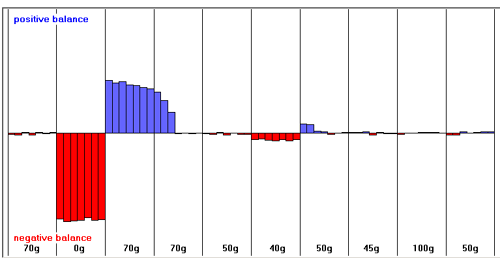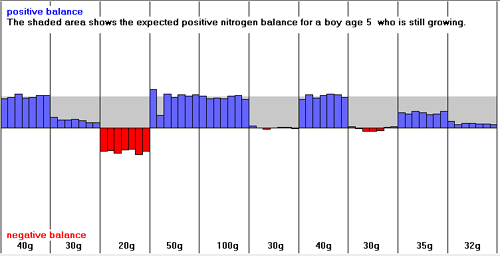
Our estimates of protein requirements have been determined by studying groups of people fed different amounts of protein, in order to determine the minimum intake that will permit them to maintain N equilibrium. At intakes below their requirementr, they will show negative N balance.
Apart from periods of recovery from protein loss, it is possible to maintain N equilibrium at any level of protein intake above the minimujm requirement. Intake in excess of requirements does not lead to positive N balance, but simply leads to excretion of more end-products of amino acid catabolism, so that balance is maintained.
This program permits you to vary a subject's protein intake week by week, and see the daily N balance; for a subject overall in N equilibrium there is normally slight fluctuation brtween marignally negative and marginally positive balance from day to day.

The graph above shows the results of such a study in an adult. Initially the subject was in N qeuilibrium (averaged out over a week), at an intake of 70 g of protein per day.
During a week with a protein-free diet there was significant negative N balance; the lost protein was replaced during 2 weeks at an intake of 70 g /day, shown as a period of positive N balance; once the lost protein had been replaced, the subject returned to N equilibrium.
Reducing the intake to 50 g /day still permitted maintenance of N equilibrium (again averaged out over a week, not considering only the results fom a single day). HOwever, 40 g /day was not adequate to maintain N balance.
A growing child should be in positive N balance, since growth involves increasing the total amount of protein the the body. The graph below shows the results of varying a child's protein intake; an adequate intake will result in positive N balance, to the extent of the grey shaded area. An intake that only supports N equilibrium in not adequate for a rgowing child.
